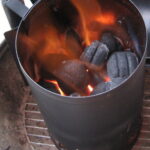Everybody knows Crayolas™. We all grew up with them, and we all loved them. But how much do you know about Crayola™ Crayons?
1. Crayolas™ may be the best known crayons in the world, but they certainly weren’t the first. The first modern crayons were manufactured in Europe, and were made up of a mixture of charcoal and oil, pressed into a cylinder. Later, various pigments were added to make up different colors. Eventually, manufacturers discovered that using wax instead of oil made the crayons easier to handle.
There were only two problems with these early crayons. First of all, they were expensive. Secondly, many of the materials used to create them were toxic. Both these failings made the crayons unsuitable for widespread use by children.
Joseph Binney and Harold Smith were the founders of Binney and Smith, the company that has made Crayola™ crayons for so many decades. (The company’s name was officially changed to Crayola, Inc. in January 2007.) The first box of Crayolas™ was introduced in 1903, cost five cents, and contained eight colors — the same colors that are in the eight-pack today: red, blue, yellow, green, violet, orange, black, and brown.
2. Coloring crayons were not the first product produced by Binney and Smith. One of their earlier products was red oxide paint, the paint that formerly was used on so many red barns across the country. They were also leaders in developing the use of carbon black in car tires, which not only changed the appearance of tires, but made them last four or five times longer.
The first products for children developed by Binney and Smith were slate pencils. By listing to the grievances of elementary school teachers, Binney and Smith discovered that there was a real market for dustless chalk, and safe, inexpensive, quality crayons.
3. The name “Crayola” was invented by Binney’s wife. The word is a combination of the French word “craie”, meaning chalk, and “ola” indicating oleaginous (oily).
4. In the history of Crayola™ crayons, the names of colors have been changed very rarely. However, dramatic name changes have taken place three times. The first was the change of “Prussian Blue” to “Midnight Blue” in 1958, after school teachers told the firm that children were not relating to the concept of the Prussian army uniform color.
The second name change was in 1962, when “Flesh” was changed to “Peach”, when it was realized that, obviously, everyone’s skin is not the same color.
The third change was in 1999, when the color “Indian Red” was changed to “Chestnut”. This was in response to the realization that many children thought that the name was a reference to the skin color of Native Americans. In reality, the name was a reference to a dye obtained from India.
5. Every year, approximately 3 billion Crayola™ crayons are produced. This would be enough to circle the earth 6 times.
6. Although there are 120 colors of Crayola™ crayons, there are only 18 wrapper colors. (Check your crayon box — it’s true!)
7. Emerson Moser had been a crayon maker with Binney and Smith for 37 years when he retired in 1990. During those 37 years only a few individuals knew his secret — Moser was color blind!
8. Crayola™ crayons are one of the most recognizable scents in the world — the 18th most recognizable to Americans, according to a Yale University study. (Numbers 1 and 2 are coffee and peanut butter.)
9. Speaking of scents, Crayola™ briefly marketed a product known as “Magic Scents” — scented crayons. Unfortunately, most of the odors were food scents such as chocolate, cherry, and blueberry. Children tended to eat the crayons — even more than usual. The food-scented crayons were replaced a few years later with “Color ‘N Smell” crayons, which were scented with non-food odors such as lumber, leather, and campfire.
10. The average 2 to 8 year old spends an average of 28 minutes a day coloring. Sure doesn’t seem as though they’re quiet that long, does it?



